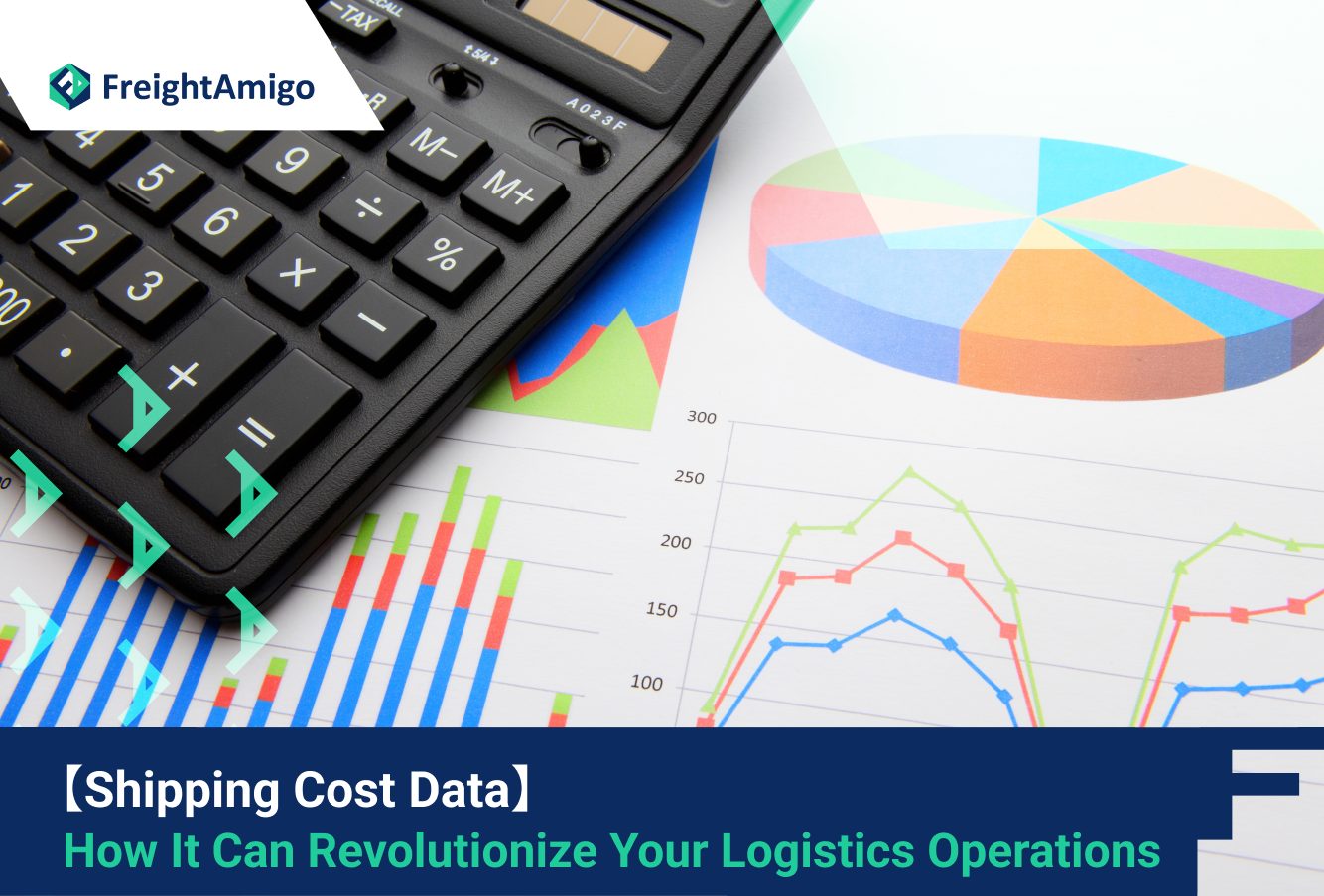Shipping cost data is a valuable resource that can provide deep insights into the world of logistics operations. In today’s fast-paced and competitive business environment, having access to accurate and timely freight rate data is crucial for companies looking to gain a competitive advantage. This article will explore the importance of freight rate data in logistics operations and how it can revolutionize the way businesses manage their supply chains.
Author Name: Aiden Ng – Marketing Analyst at FreightAmigo
Want to compare the best Express, Air Freight, Sea Freight, Rail Freight & Trucking rates so as to have better control on cost?
The Importance of Shipping Cost Data in Logistics Operations
Freight rate data plays a vital role in logistics operations as it helps companies make informed decisions regarding shipping costs, transit times, and carrier selection. By analyzing historical data, businesses can identify trends and patterns, allowing them to optimize their supply chain and reduce transportation costs. Furthermore, having access to accurate the data enables companies to negotiate better rates with carriers, resulting in significant cost savings.
In addition to cost optimization, freight rate data also helps companies improve customer service and delivery performance. By analyzing transit times and carrier performance metrics, businesses can identify bottlenecks and inefficiencies in their supply chain, allowing them to take corrective actions and ensure timely deliveries. This level of visibility and control over the logistics process can significantly enhance customer satisfaction and loyalty.
How The Data Can Revolutionize Your Logistics Operations
The power of freight rate data lies in its ability to provide real-time visibility into the supply chain and enable data-driven decision making. With the advent of technology and advanced analytics tools, businesses can now collect, analyze, and leverage the data to drive innovation and transform their logistics operations.
One of the key ways freight rate data can revolutionize logistics operations is through route optimization. By analyzing historical data on transit times, costs, and carrier performance, businesses can identify the most efficient routes for their shipments. This not only saves time and money but also reduces the environmental impact of transportation by minimizing fuel consumption and carbon emissions.
Moreover, freight rate data can help companies identify and mitigate risks in their supply chain. By monitoring market trends and fluctuations in freight rates, businesses can proactively adjust their strategies to avoid disruptions and ensure uninterrupted operations. This level of agility and foresight can be a game-changer in today’s dynamic business environment.
Understanding the Different Types of Shipping Cost Data
Freight rate data can be classified into various types, each providing unique insights into the logistics operations. Some of the common types of freight rate data include spot rates, contract rates, and historical rates.
Spot rates refer to the rates at which carriers are willing to transport goods at a given point in time. These rates are highly volatile and fluctuate based on factors such as market demand, fuel prices, and capacity availability. Spot rates are typically used for short-term shipments or when there is a need for immediate transportation.
Contract rates, on the other hand, are negotiated rates between shippers and carriers for a specified period. These rates are more stable and predictable compared to spot rates, providing businesses with greater visibility and control over their transportation costs. Contract rates are commonly used for long-term shipping agreements and allow companies to plan their logistics operations more effectively.
Historical rates are past freight rate data that can be used for trend analysis and benchmarking. By analyzing historical rates, businesses can identify patterns, seasonality, and market trends, allowing them to make informed decisions about carrier selection, pricing strategies, and capacity planning.
Strategies for Collecting and Analyzing The Data
Collecting and analyzing freight rate data requires a systematic approach and the use of advanced analytics tools. Here are some strategies businesses can adopt to harness the power of the data:
- Data Integration: Businesses should integrate their freight rate data with other relevant data sources such as shipment details, carrier performance metrics, and customer feedback. This integration enables businesses to gain a holistic view of their supply chain and identify correlations and insights that would otherwise go unnoticed.
- Real-time Monitoring: By leveraging technology and automation, businesses can monitor freight rate data in real-time, allowing them to react quickly to market changes and make timely decisions. Real-time monitoring also enables businesses to identify anomalies and deviations from expected costs or transit times, enabling them to take corrective actions promptly.
- Predictive Analytics: By applying predictive analytics techniques to freight rate data, businesses can forecast future trends and demand patterns, enabling them to optimize their logistics operations. Predictive analytics can also help companies identify potential risks and disruptions, allowing them to take proactive measures to mitigate them.
- Collaborative Platforms: Businesses can leverage collaborative platforms and digital marketplaces to access and share freight rate data with their partners and stakeholders. These platforms enable real-time collaboration, data sharing, and benchmarking, allowing businesses to make more informed decisions and improve their overall supply chain performance.
Conclusion: Harnessing the Power of Shipping Cost Data for a Competitive Advantage
Freight rate data is a game-changer in the world of logistics operations. By unlocking the power of freight rate data, businesses can gain valuable insights, optimize their supply chain, and revolutionize their logistics operations. From cost optimization and route optimization to risk mitigation and customer service improvement, freight rate data offers numerous benefits for businesses looking to stay competitive in today’s fast-paced business environment.
To harness the power of freight rate data, businesses need to adopt a data-driven approach, leverage advanced analytics tools, and embrace technology. By collecting and analyzing freight rate data effectively, businesses can make informed decisions, improve operational efficiency, and gain a competitive advantage in the market.
There are different options for cargo transportation. If you want to choose the most convenient and suitable solution, it is best to have the full support of logistics experts! If you are planning to ship goods overseas, please go to the FreightAmigo page for inquiries.
===
Read More:
【From Data to Deals】How Freight Rate Data Can Transform Carrier Contract Negotiations
【From Data to Dollars】How Leveraging Freight Rate Data Can Drive Cost Savings in Logistics
【Driving Towards a Sustainable Future】 Exploring Policy Frameworks for Low-Carbon Logistics
===
If you have any inquiries on logistics/supply chain, feel free to contact FreightAmigo now:
Chat with us online OR
Phone : +852 28121686
WhatsApp: +852 27467829









































